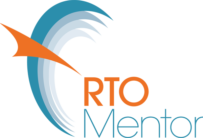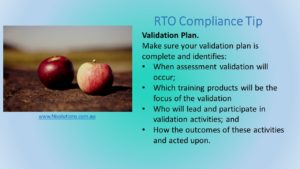The Validation of your assessment tools is an important aspect of your RTO operation. As RTO consultants we get out and about and are seeing many assessments and their judgements being validated. It is so pleasing to also see so many RTOs validating their assessment tools prior to using them. Once upon a time this was rare, so that is why I bring it up.
The Standards for Registered Training Organisations 2015 requires that the RTO undertakes assessment validation of assessment practices and judgements. This blog is about the validation that happens before this. The way you double check a tool before it is put on scope, or before it is released to your students.
So how do you do that?
- Do you have a regular checklist that tells you it must be done?
- Does it come up once a quarter as something to cross check?
This Assessment validation involves reviewing and evaluating assessment tools and processes to make sure they meet the need of industry, your students as well as the unit/s being assessed against. You can easily buy a tool from someone, but have you checked that it actually is suitable for your students?
I cannot stress how important this is when setting up your RTO and when you are expanding your existing RTO.
Validation with industry is essential – someone from the industry you will have on scope that can confirm the way situations you describe in your training and assessment are actually what happens.
It is recommended that the process of validation occurs at the time of development of your assessment tools as a minimum. The process of validating student evidence and assessment decisions will also look at the way your tools are worded. This also is part of your continuous improvement exercise.
Continuous improvement is about reviewing your assessment validation processes completed in the past six months.
The validation outcomes provides you with some valuable information.
So how do you undertake the exercise?
You should identify judgements tools you could use to undertake the activity, such as a validation checklist. These tools need to guide you clearly through the process so you can confidently make judgements about the quality assurance and quality control of assessment.
Validation of your assessment tools requires you to confirm that assessments (including RPL):
- meet the requirements of the endorsed components of training packages
- meet the outcomes specified in the course/units of competency
- comply with the assessment guidelines included in the applicable training packages
- meet the Principles of assessment – fair, flexible, reliable and valid
- meet the Rules of evidence – valid, sufficient, authentic, current
- provide for applicants to be informed of the context and purpose of the assessment and the assessment process
To successfully conduct Validation activities it is recommended you have a lead person who ensures that effective assessment validation practices are implemented and documented in your RTO, someone who didn’t write the assessment tool, and is with industry knowledge, and/or maybe an assessor.
Validation activities can take many forms so remember to document any validation activities you undertake. There is nothing worse than doing the activity and not being able to find the evidence when requested by your Auditor (and trust me they will ask).
For those who follow my updates, they will be getting the feeling that I am passionate about providing you with information to assist you with your RTO. To me this is why I get up in the morning; I want to help you, I want to see quality RTOs providing training to people and allowing them to move along in the world. So Validation of your assessment tools is important and one of my passion areas. All the very best with your RTO.

